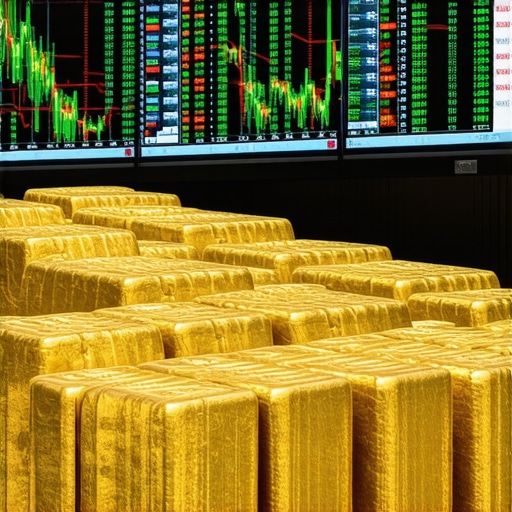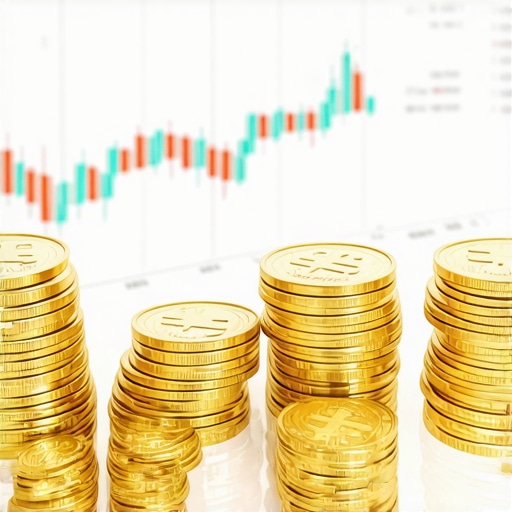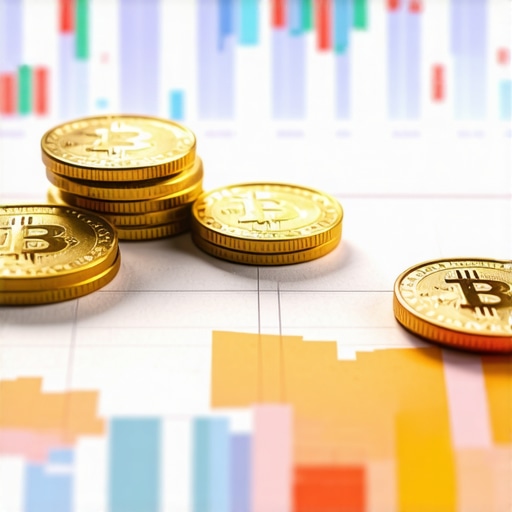Strategic Insights into Investment Dynamics: Gold versus Stocks in 2025
As we navigate the complex landscape of financial markets in 2025, discerning the nuanced interplay between gold and stocks becomes paramount for both seasoned investors and emerging market participants. With macroeconomic uncertainty, geopolitical tensions, and evolving monetary policies, understanding which asset class offers superior returns requires a deep, analytical approach rooted in current market intelligence and historical trends.
The Role of Macroeconomic Factors in Shaping 2025 Investment Outcomes
The global economic outlook for 2025 presents a tapestry of challenges and opportunities. Inflationary pressures, driven by supply chain disruptions and monetary policy shifts, influence investor behavior significantly. Gold, traditionally viewed as an inflation hedge, gains prominence during periods of currency devaluation and geopolitical instability, as documented in recent trend analyses.
Comparative Performance: Historical Context and Future Projections
Historically, gold’s performance during economic downturns has demonstrated resilience, often outperforming equities during crisis periods. Conversely, stocks tend to excel in stable or growth-oriented phases. Experts suggest that in 2025, the divergence between these assets will be accentuated by central banks’ quantitative easing measures, which can flood markets with liquidity, elevating gold prices through increased demand for safe-haven assets. For a detailed analysis, consider reviewing our comprehensive report.
Can Gold Outperform Stocks in 2025? An Expert Inquiry
What are the key indicators that will determine whether gold will outperform stocks in 2025?
This question captures the essence of strategic asset allocation in uncertain times. Factors such as central bank gold purchases, inflation rates, and geopolitical stability will be pivotal. Moreover, technological advancements in gold trading platforms and the proliferation of gold ETFs will influence liquidity and accessibility, potentially skewing the traditional performance patterns.
Implications for Portfolio Diversification and Risk Management
Incorporating gold into a diversified investment portfolio can mitigate volatility, especially in turbulent economic climates. As outlined in our retirement planning guide, gold IRAs are a strategic avenue to enhance long-term wealth preservation. Simultaneously, equities remain vital for growth, but their susceptibility to market cycles underscores the importance of a balanced approach.
Investors should monitor emerging gold demand trends and global economic indicators continuously. Those with a keen understanding of market signals can adapt their strategies proactively, leveraging tools such as futures and ETFs to optimize returns while managing downside risks.
To deepen your strategic insights, explore our comprehensive expert strategies for gold investment. Your contribution of insights and experiences can further enrich this evolving discourse—consider sharing your perspective with our community of advanced investors.
Decoding the Influence of Geopolitical Shifts on Gold’s Trajectory in 2025
As we delve deeper into the factors influencing gold prices in 2025, it becomes evident that geopolitical tensions—ranging from trade disputes to regional conflicts—play a crucial role. Historically, gold has served as a safe-haven asset during times of international instability, often experiencing surges when geopolitical uncertainties escalate. For instance, recent analyses highlight how tensions in the Middle East and Asia have spurred increased demand for physical gold and gold-backed securities, reinforcing its role as a hedge against geopolitical risk. To understand these dynamics, consider reviewing our comprehensive trend analysis.
How Will Technological Innovations Transform Gold Investment Strategies in 2025?
Emerging technologies are revolutionizing how investors access and trade gold. From blockchain-based gold tokens to AI-driven market analytics, these innovations enhance transparency, liquidity, and security. For example, gold ETFs and digital trading platforms now offer unprecedented ease of access, enabling investors to react swiftly to market shifts. Furthermore, the adoption of gold ETFs and mutual funds allows for diversified exposure, mitigating risks inherent in physical gold holdings. Experts suggest that leveraging these technological tools will be vital for staying competitive in 2025’s volatile environment.
Could Innovative Gold Investment Vehicles Outperform Traditional Assets in 2025?
This question challenges investors to reconsider conventional wisdom about gold investments. While physical gold remains a cornerstone, newer vehicles like gold-backed cryptocurrencies and fractional ownership models are gaining traction. These platforms provide liquidity and flexibility previously unavailable, enabling investors to capitalize on short-term market movements. Moreover, understanding how global economic factors—such as currency devaluations and central bank gold purchases—interact with these innovative instruments will be essential for crafting resilient portfolios. For a detailed exploration, see our expert analysis.
If you’re eager to deepen your understanding of advanced gold investment strategies, I encourage you to explore our comprehensive guide. Share your insights or questions in the comments—your experience can help refine these emerging strategies for the community.
Deciphering the Complex Interplay of Geopolitical Risks and Market Sentiment in Gold’s Trajectory
In 2025, the geopolitical landscape remains a pivotal factor influencing gold prices. Historically, gold acts as a safe haven during international crises, with its demand surging amid heightened tensions in regions such as the Middle East and East Asia. According to a detailed analysis by the World Gold Council, geopolitical instability not only boosts physical gold demand but also accelerates investment in gold-backed securities, amplifying its price volatility.
Crucially, market sentiment often reacts swiftly to geopolitical developments, creating opportunities for tactical entry and exit strategies. Investors with access to high-frequency trading algorithms and real-time geopolitical intelligence can exploit these fluctuations. Understanding the nuanced relationship between political events and gold demand requires an interdisciplinary approach combining political analysis, economic modeling, and technical analysis.
Innovations in Gold Asset Management: From Blockchain to Fractional Ownership
Emerging technologies are revolutionizing the management and investment in gold assets, broadening access and enhancing liquidity. Blockchain technology, in particular, has introduced transparency and security to gold transactions. Platforms like Gold Token enable fractional ownership and trading of physical gold, democratizing access for retail investors and reducing entry barriers.
Additionally, advancements in digital custody solutions and smart contracts are streamlining compliance and settlement processes. These innovations are not merely infrastructural; they fundamentally alter the risk-return profiles of gold investments, offering opportunities for diversification and hedging that were previously impractical or unavailable.
What are the potential impacts of digital gold tokens on traditional gold ETFs and physical holdings in 2025?
This question probes the transformative potential of digital assets in gold investing. Digital gold tokens could offer greater liquidity, lower transaction costs, and enhanced transparency. However, regulatory uncertainties and technological vulnerabilities pose risks that must be carefully managed. As the market matures, investors should evaluate these instruments within a broader strategic framework, integrating them with traditional holdings for optimal resilience.
For those seeking to stay at the forefront of these developments, our comprehensive guide to innovative gold investments offers valuable insights. Sharing your experiences or questions can foster a community of informed investors ready to capitalize on these technological shifts.
Synergizing Gold and Equity Strategies in a High-Volatility Environment
Balancing gold and stocks within an investment portfolio is an art that demands continuous adaptation. In high-volatility scenarios driven by macroeconomic shifts, geopolitical risks, and technological disruptions, a dynamic asset allocation approach becomes essential.
For example, during periods of monetary easing, gold often benefits from increased demand for safe-haven assets, while equities may experience turbulence. Conversely, in growth phases driven by technological innovation and favorable policy, stocks can outperform. An integrated strategy that employs tactical rebalancing, options hedging, and alternative exposure via ETFs can help manage downside risks and seize emerging opportunities.
To refine your tactical approach, consider exploring our expert strategies for diversified asset management. Your insights and experiences are invaluable—share them with our community to foster collective intelligence and resilience in navigating 2025’s complex markets.
Conclusion: Embracing a Multifaceted Investment Paradigm in 2025
Ultimately, the integration of geopolitical analysis, technological innovation, and dynamic asset allocation defines the cutting edge of investment strategy in 2025. For investors willing to delve deeper, continuous education and active engagement with emerging trends are vital. Stay tuned for our upcoming analyses and expert interviews—your proactive participation can significantly enhance your portfolio’s robustness against the unpredictable currents of global finance.

Unlocking the Power of Quantitative Models in Gold vs. Stocks Forecasting
As we venture further into 2025, sophisticated quantitative models have become indispensable tools for predicting the trajectory of gold and equities. Utilizing machine learning algorithms and macroeconomic indicator datasets, analysts can identify subtle market signals that traditional methods might overlook. For instance, multivariate regression and neural networks can analyze global liquidity measures, inflation expectations, and geopolitical risk indices to generate probabilistic forecasts, offering a nuanced edge in strategic decision-making.
How Do Central Bank Digital Currencies (CBDCs) Influence Gold and Equity Markets?
The emergence of CBDCs introduces a new layer of complexity to asset correlations. As central banks experiment with digital currencies, the implications for traditional safe havens like gold, as well as for equity markets, are profound. CBDCs could potentially enhance monetary policy transmission, alter inflation dynamics, and shift investor preferences towards digital assets, thereby reshaping the demand landscape for physical gold and influencing equity valuations. According to a comprehensive analysis by the IMF’s report on CBDCs, these developments warrant close monitoring for strategic portfolio adjustments.
What Role Will Environmental, Social, and Governance (ESG) Criteria Play in Gold and Stock Investment in 2025?
As ESG considerations become deeply embedded in investment frameworks, the traditional risk-return calculus is evolving. Gold mining companies are increasingly adopting sustainable practices, which can influence their valuation and investor appetite. Simultaneously, corporate ESG ratings impact stock performance, especially in sectors like technology and renewable energy. Investors integrating ESG metrics into their models can better navigate regulatory changes, reputational risks, and long-term value creation, thus gaining a competitive advantage in 2025’s market landscape.
How can institutional investors leverage alternative data sources to refine gold and stock investment strategies in 2025?
Institutional investors are turning to unconventional data sources—such as satellite imagery, social media sentiment analysis, and supply chain tracking—to gain real-time insights into market dynamics. These alternative datasets enable enhanced predictive capabilities, allowing for proactive adjustments to portfolios. For example, satellite images of mining operations can provide early signals of gold supply disruptions, while social media analytics can gauge investor sentiment shifts, all contributing to more informed and agile investment decisions. According to a recent study by J.P. Morgan, the integration of alternative data has consistently improved alpha generation in volatile markets.
To stay at the forefront of these innovations, consider adopting multi-source data integration platforms and advanced analytics tools, which can transform raw data into actionable insights. Share your experiences or inquiries to foster a community of high-level investors dedicated to mastering 2025’s complex financial environment.
Conclusion: Navigating 2025 with a Multidimensional Investment Approach
In an era marked by technological breakthroughs and geopolitical shifts, the most resilient investment strategies will be those that embrace multifaceted analysis, integrating quantitative models, digital assets, ESG factors, and alternative data streams. Continuous learning and adaptation are essential to capitalize on emerging opportunities while mitigating risks. Engage with industry reports, participate in expert forums, and refine your models to stay ahead in the rapidly evolving landscape of gold and stock investments.
Expert Insights & Advanced Considerations
1. The Role of Technological Innovation in Asset Allocation
Emerging fintech solutions, such as blockchain-based gold tokens and AI-driven analytics, are transforming how investors manage and diversify their portfolios, offering enhanced transparency, liquidity, and security.
2. Geopolitical Risks as Catalysts for Gold Demand
Increased regional conflicts and trade tensions continue to drive safe-haven demand for gold, making geopolitical analysis crucial for anticipating market movements in 2025.
3. Central Bank Policies and Digital Currencies
Central bank digital currencies (CBDCs) are reshaping monetary policy transmission, influencing both gold and stock markets through shifts in liquidity and investor behavior.
4. ESG Criteria and Sustainability Trends
Sustainable practices in gold mining and corporate ESG ratings are increasingly impacting investment decisions, emphasizing the importance of integrating ESG metrics into strategic analyses.
5. Quantitative Models for Market Prediction
Advanced machine learning models utilizing macroeconomic data provide nuanced forecasts for gold and stocks, offering a competitive edge in strategic planning.
Curated Expert Resources
- Buy Gold Now’s Ultimate Guide to Buying Gold Safely in 2025: Comprehensive strategies for secure gold investments tailored for 2025 market conditions.
- Top Trends in Gold Demand & Price Forecasts: In-depth analysis of demand drivers and predictive insights on gold prices in 2025.
- IMF Report on CBDCs and Market Impact: Authoritative analysis of how digital currencies influence global monetary dynamics.
- World Gold Council’s Geopolitical Impact Studies: Detailed reports on geopolitical tensions and safe-haven asset performance.
- J.P. Morgan’s Alternative Data Insights: Cutting-edge research on leveraging unconventional data sources for investment strategy refinement.
Final Expert Perspective
In 2025, the dynamic interplay between technological innovation, geopolitical developments, and macroeconomic shifts underscores the necessity of a multifaceted investment approach, especially when evaluating gold versus stocks. Harnessing advanced predictive models, staying informed through authoritative research, and incorporating ESG considerations are pivotal for sophisticated investors seeking resilience and growth. As always, continuous learning and strategic adaptation are your best tools—engage with industry reports, participate in expert forums, and refine your methodologies to navigate this complex landscape with confidence. Your proactive engagement not only elevates your investment acumen but also contributes meaningfully to the collective expertise of the financial community.










